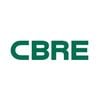Shifting Demand Patterns Drive Non-CBD Outperformance
The pandemic-induced shift in work, travel and transportation patterns has led core Central Business District (CBD) hotels to underperform their non-CBD counterparts both in occupancy and daily rates. However, these trends may be masking broader reasons why non-CBD hotels are performing better: technological conveniences and shifting demand patterns.
Technology is changing which hotels outperform and the revenue contributions from different categories. There was a time when ancillary revenues from phone calls and movie rentals accounted for nearly 3% of total hotel revenues. Today, nearly every guest has their own phone, TV and movie-streaming device in their pocket.
A lot has been written about how increased competition from alternative lodging sources like short-term rentals, camper vans, cruise berths, glamping yurts, timeshares and vacation clubs has impacted hotel performance. While these alternative sources have certainly put downward pressure on hotel occupancy and average daily rates (ADRs), the impact of distributed technology like ride-share services and food-delivery apps has been less explored.
In the past, travelers were willing to pay a premium to stay within walking distance of their ultimate destination. For example, in 2008, the ADR premium for CBD over non-CBD hotels was 62%. By the time the largest ride-sharing companies had gone public in 2019, the CBD vs. non-CBD premium had eroded to just 46%. Year-to-date, it is down to 42%. Travelers now are willing to stay just outside of what most would consider a walkable distance and spend a fraction of the CBD room-rate premium on transportation to their event or meeting.
The proliferation of resort and destination fees likely is another reason why non-CBD hotels are outperforming. Since 2015, the number of hotels charging a destination fee has increased to 12.5% from 4.3% and the average fee has nearly tripled to $11 from $4, according to CBRE's Trends® in the Hotel Industry. While $11 may seem modest, certain rate categories like contract and employee rates don’t always pay the fee, nor do loyalty redemption nights and certain loyalty membership tiers. The fact that fewer non-CBD hotels charge these fees could also be leading to the shift in preferences.
Figure 1: CBD vs Non-CBD Hotel Average Daily Rate Index
Figure 2: CBD Over Non-CBD Hotel Average Daily Rate Premium
Distributed technology also is disrupting guests’ hotel spending patterns. In the past, except for a few walkable city submarkets with many food & beverage options like Manhattan, Boston’s Back Bay and San Antonio’s Riverwalk, most travelers were likely to dine at their hotel. F&B sales peaked at 38.2% of total room revenue at full-service hotels in 2003, according to CBRE's Trends® in the Hotel Industry. By 2019, the proliferation of food delivery apps had lowered that share to 31.5%.
Hotel restaurants now must compete with a larger set of restaurants that can be conveniently reached via ride share, as well as a plethora of food delivery apps offering 24/7 service. If the in-house experience doesn’t offer strong consumer appeal, good food, attentive service and fair pricing, a guest likely will use a food delivery app or travel offsite.
Figure 3: Food & Beverage Share of Total Hotel Operating Revenue
These distributed technologies are changing where guests stay, how they spend and, as a secondary effect of hybrid work, when they stay. Without careful planning in partnership with brands and hotel management, there are continued risks to shifting demand patterns and the diverting of revenue streams. For example, similar to how on-line travel agencies siphoned bookings from direct channels, technology companies are offering day passes to capitalize on excess capacity of hotel amenities like pools, spas and meeting space.
While attracting local residents to generate additional hotel revenue is not a new idea, the ability to do so has been greatly enhanced by online app-based distribution platforms, as well as the scale of the globally recognized brand family loyalty programs.
Given the need to find incremental revenues for additional profit growth and investment returns, we believe hotel operators and globally recognized brand families will ultimately turn to their own technology applications. One way is to allow the more than 580 million hotel loyalty members worldwide to accommodate remote work by booking day passes for certain hotel amenities like meeting spaces, lounges and lobbies. This strategy is similar to how hotels have battled to regain market share from online travel agencies. Hotel loyalty member bookings have increased to 51% of total hotel occupancy today from 44% in 2018.
All these changes suggest that hotels are moving from purely a location-driven demand strategy to a total experience or total value strategy for most guests.
Trends®in the Hotel Industry is an annual compilation of unit-level hotel financial statements. Since 1936, CBRE Hotels Research has collected year-end operating statements from thousands of hotels across the nation. To learn more about Trends®in the Hotel Industry, please visit the Trends®in the Hotel Industry, please visit the Trends® store page.
About CBRE Group, Inc.
CBRE Group, Inc. (NYSE:CBRE), a Fortune 500 and S&P 500 company headquartered in Dallas, is the world's largest commercial real estate services and investment firm (based on 2021 revenue). The company has more than 105,000 employees (excluding Turner & Townsend employees) serving clients in more than 100 countries. CBRE serves a diverse range of clients with an integrated suite of services, including facilities, transaction and project management; property management; investment management; appraisal and valuation; property leasing; strategic consulting; property sales; mortgage services and development services. Please visit our website at www.cbre.com.








